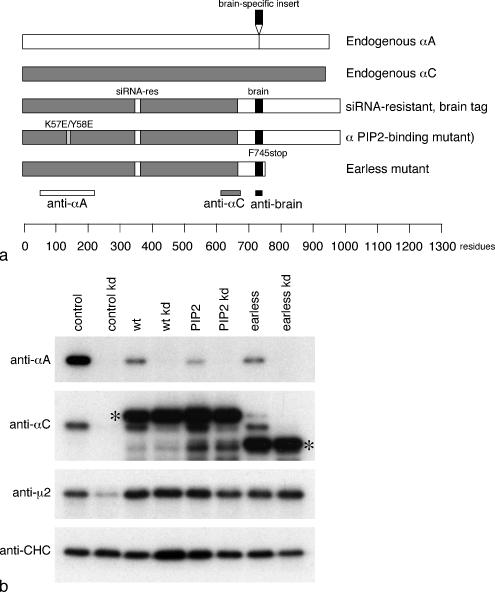Figure 2.
Brain-tagged α constructs used in this study. (a) Schematic diagram of the three brain-tagged constructs. (b) Homogenates of control cells and cells stably transfected with the brain-tagged α constructs, either with or without treatment with an siRNA to deplete endogenous α, were subjected to SDS-PAGE and blotted, and the blots were probed with antibodies against αA, αC, μ2, or clathrin heavy chain (CHC) as a loading control. Labeling with the αA antibody, which does not cross-react with the constructs, shows that endogenous αA disappears upon knockdown and is also reduced in cells expressing large amounts of construct. Labeling with the αC antibody, which recognizes both the endogenous protein and the constructs, shows that the endogenous protein disappears upon knockdown, whereas the constructs (asterisks) do not. Expression of μ2 is reduced in the control knockdown because the protein is unstable in the absence of the other AP-2 subunits; however, it does not appear to be up-regulated in the cells that overexpress the various α constructs.

